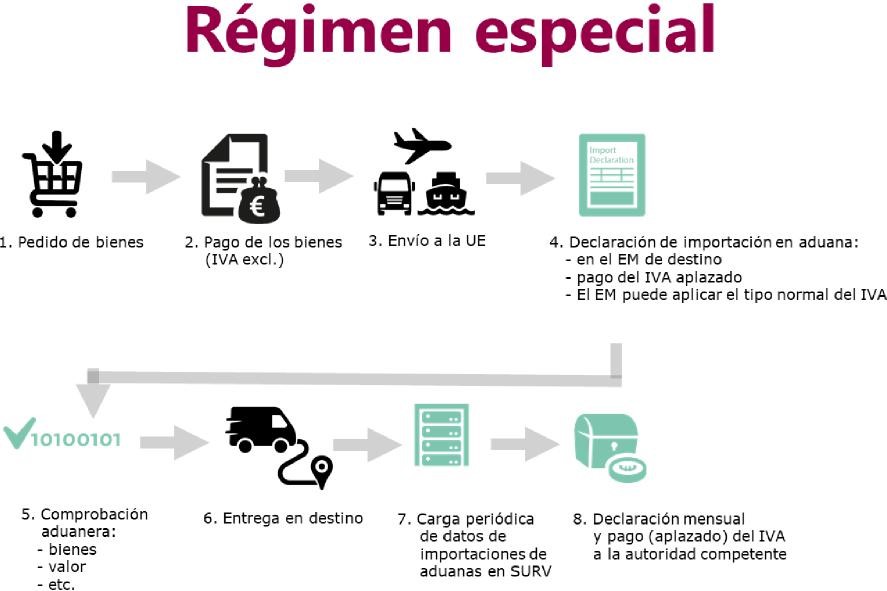Process description
The following image shows a summary of the special regime process:

The special arrangements can only be used if the Member State of destination of the goods and the Member State of import are the same, i.e. when the end-use of the goods intended for the importer is the Member State in which the goods are released for free circulation. This is necessary as VAT is due in the importing Member State and it cannot collect the VAT applicable in another Member State.
Along the same lines, the customs office competent to declare EEV for release into free circulation when the special procedure is used is the customs office located in the Member State of end-use (Article 221, paragraph 4, of AE CAU ).
Pursuant to Article 201 of the VAT Directive, any person or persons designated or recognized as liable by the Member State of import may be liable for VAT on import. In practice, the recipient (i.e. the importer) is usually the one liable for the import VAT.
VAT is due only if it has actually been collected from the recipient (i.e. the importer), in order to avoid onerous refund procedures in the event that the goods cannot be delivered or are rejected by the recipient (i.e. the importer). . The person benefiting from the special arrangement (usually postal service operators, express delivery companies, customs agents and similar economic operators, provided that they are the ones who presented the goods to customs) must keep the records. The records should make it possible to determine the total amount of VAT collected during a given month and provide evidence relating to those cases where VAT could not be collected because the goods were not delivered.
It should be noted that the use of the special regime does not require a specific customs authorization. However, Member States may require that the person using this scheme complies with the conditions applicable to the authorisation of deferral of payment, in accordance with Article 110 of the UCC .
Authorisations granted for the deferral of payment of customs duties may only be applied to the special arrangement if the conditions for the deferral of payment are the same, namely that the deadline for payment expires on the sixteenth day of the following month, in respect of the total amount of duties incurred during a given month, in accordance with Article 108(1), second subparagraph, of the UCC.
Under the special scheme, Member States may allow the systematic use of the normal VAT tax rate in order to facilitate the declaration process for persons benefiting from this scheme and acting as customs representatives on behalf of the importers (that is, the recipients). Otherwise, due to the high number of low-value shipments, these operators could face difficulties in correctly applying the reduced VAT rates.
Example of using the customs declaration with the H7 dataset
A consumer in Member State A has ordered a book online from a seller located in a third country, which is transported by post to EU . The seller is not registered with IOSS , so the VAT amount must be settled at the time of import. The intrinsic value of the book is 60 EUR , so the customs declaration with the H7 data set can be used for the import clearance of the package in Member State A. The operator of postal services of Member State A declares said good using the special regime and indicating that the EU consumer is the importer and entering the codes C07 and F49 in the field corresponding to the additional regime code (ED 11 10 000 000). Customs releases the merchandise for free circulation, authorizing the deferral of VAT payment14. The postal service calculates VAT at the normal rate in Member State A and collects VAT from the consumer in order to deliver the book to him or her. The postal service operator will settle the corresponding VAT amount to the customs or tax authorities before the sixteenth day of the following month.
14Provided for in article 369 septvicies ter of the VAT Directive.